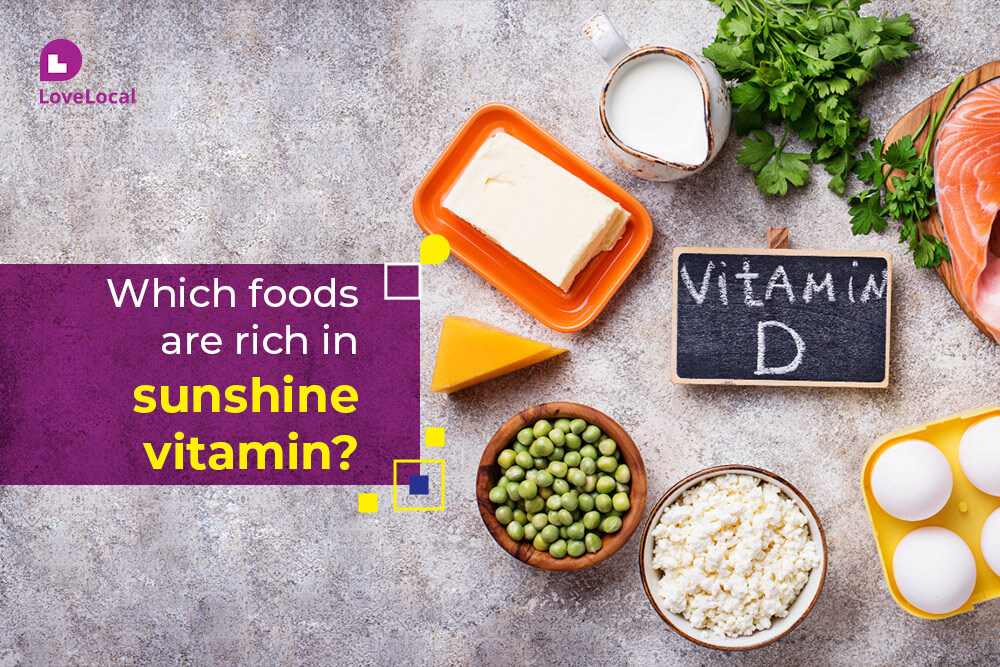Vitamin D, often referred to as the “sunshine vitamin,” plays a crucial role in maintaining overall health and well-being. While sunlight is a primary source of vitamin D, certain vegetables can also help boost your vitamin D levels. Incorporating these vitamin d vegetables into your diet can be especially beneficial for individuals with limited sun exposure or those at risk of vitamin D deficiency.
Understanding Vitamin D
Vitamin D is essential for maintaining strong bones, regulating the immune system, and supporting overall health. It helps the body absorb calcium, which is vital for bone health, and plays a role in muscle function and immune response. Vitamin D deficiency can lead to health issues such as weakened bones, increased risk of infections, and fatigue.
Why vitamin D is important:
- Bone Health: Vitamin D is essential for calcium absorption in the body, which is necessary for maintaining strong and healthy bones. Without enough vitamin D, bones can become brittle and weak, increasing the risk of fractures and osteoporosis.
- Immune Function: Vitamin D plays a role in the immune system, helping to protect the body against infections and diseases. It helps regulate immune responses and can reduce the risk of autoimmune diseases.
- Muscle Function: Vitamin D is important for muscle function and strength. It can help improve muscle performance and reduce the risk of falls in older adults.
- Mood Regulation: Vitamin D is linked to mood regulation and mental health. Low levels of vitamin D have been related with an increased risk of depression and other mood disorders.
- Heart Health: Some studies suggest that vitamin D may play a role in heart health by reducing the risk of heart disease and lowering blood pressure.
- Cancer Prevention: There is some evidence to suggest that vitamin D may help reduce the risk of certain cancers, including colon, breast, and prostate cancer.
- Brain Development: Vitamin D is important for brain development and function. Adequate vitamin D levels during pregnancy and early childhood may help support healthy brain development.
- Weight Management: Some studies suggest that vitamin D may play a role in weight management and metabolism. Low levels of vitamin D have been associated with obesity and weight gain.
Vitamin D rich foods
While vitamin D is predominantly found in animal-based foods, some vegetables contain small amounts of this important vitamin. Incorporating these vitamin d fruits and vegetables into your diet can contribute to your overall vitamin d vegetables list:
1. Mushrooms
Mushrooms are one of the rare plant-based sources of vitamin D. When exposed to sunlight or ultraviolet (UV) light during growth, mushrooms can naturally produce vitamin D. Look for mushrooms that are labeled as “UV-treated” or “high in vitamin D” to ensure maximum vitamin D content.
2. Spinach
Spinach is a nutrient-dense vegetable that contains a small amount of vitamin D. While it may not be as high in vitamin D as mushrooms, spinach offers a range of other health benefits, including being rich in iron, vitamin K, and antioxidants.
3. Kale
Kale is another leafy green vegetable that contains some vitamin D. Like spinach, kale is packed with nutrients and is a great addition to a healthy diet.
4. Broccoli
Broccoli is the best vegetable that is rich in vitamins, minerals, and antioxidants. While it may not be a significant source of vitamin D, broccoli can still contribute to your overall vitamin D intake.
5. Brussels Sprouts
Brussels sprouts are a nutritious vegetable that contains some vitamin D. They are also high in fiber, vitamins, and minerals, making them a healthy choice for overall well-being.
6. Asparagus
Asparagus is a delicious vegetable that also contains some vitamin D. It is low in calories and rich in nutrients like fiber, vitamins A, C, and K, as well as folate.
7. Okra
Okra, also known as lady’s fingers, is a nutritious vegetable that contains a small amount of vitamin D. It is also rich in vitamins A and C, as well as antioxidants and fiber.
8. Swiss Chard
Swiss chard is a leafy green vegetable that contains some vitamin D. It is also a good source of vitamins A, C, and K, as well as magnesium, potassium, and iron.
9. Turnip Greens
Turnip greens are the leaves of the turnip plant and are rich in nutrients, including vitamin D. They are also a good source of vitamins A, C, and K, as well as calcium and fiber.
10. Mustard Greens
Mustard greens are another leafy green vegetable that contains vitamin D. They are also rich in vitamins A, C, and K, as well as antioxidants and fiber.
Incorporating Vitamin D Vegetables into Your Diet
To maximize the vitamin D rich vegetables, consider the following tips:
- Choose UV-treated mushrooms: Look for mushrooms that have been exposed to UV light, as they will have higher levels of vitamin D.
- Include a variety of vegetables: Incorporate a variety of vitamin D-rich vegetables into your diet to ensure you are getting a range of nutrients.
- Pair with vitamin D sources: Combine vitamin D vegetables with other sources of vitamin D, such as fortified foods or supplements, to meet your daily vitamin D needs.
Conclusion
While vegetables may not be the primary source of vitamin D, they can still play a role in boosting your vitamin D levels. Incorporating best source of vitamin d rich vegetables into your diet, along with other sources of vitamin D, can help ensure that you are meeting your daily vitamin D requirements. As always, it’s important to consult with a healthcare professional before making any significant changes to your diet or supplementation routine. Shop at LoveLocal to support local retailers!
Frequently Asked Questions (FAQs):
While vegetables are not typically high in vitamin D, some contain small amounts. These include mushrooms (especially those exposed to UV light), spinach, kale, broccoli, Brussels sprouts, asparagus, okra, Swiss chard, turnip greens, and mustard greens.
Very few seeds naturally contain vitamin D. However, some seeds are fortified with vitamin D, such as chia seeds, flaxseeds, and hemp seeds.
The quickest way to raise vitamin D levels is through exposure to sunlight. Spending time in the sun, particularly during midday, can help your body produce vitamin D. Alternatively, you can take vitamin D supplements or consume foods rich in vitamin D.
Vitamin D tablets are generally safe when taken as directed. However, extreme intake of vitamin D supplements can lead to vitamin D toxicity. It’s important to follow the recommended dosage and consult with a healthcare professional before starting any supplement regimen.
Signs of low vitamin D levels include fatigue, muscle weakness, bone pain, frequent infections, mood changes, and hair loss. If you suspect you have low vitamin D levels, it’s best to consult with a healthcare professional for proper diagnosis and treatment.



